Most high-end hair salons and beauty supply stores now stock hair extensions. While there are many options for hair ties, we’ll focus on the distinction between tape in vs sew in extensions here. You may find this information regarding hair extensions helpful.
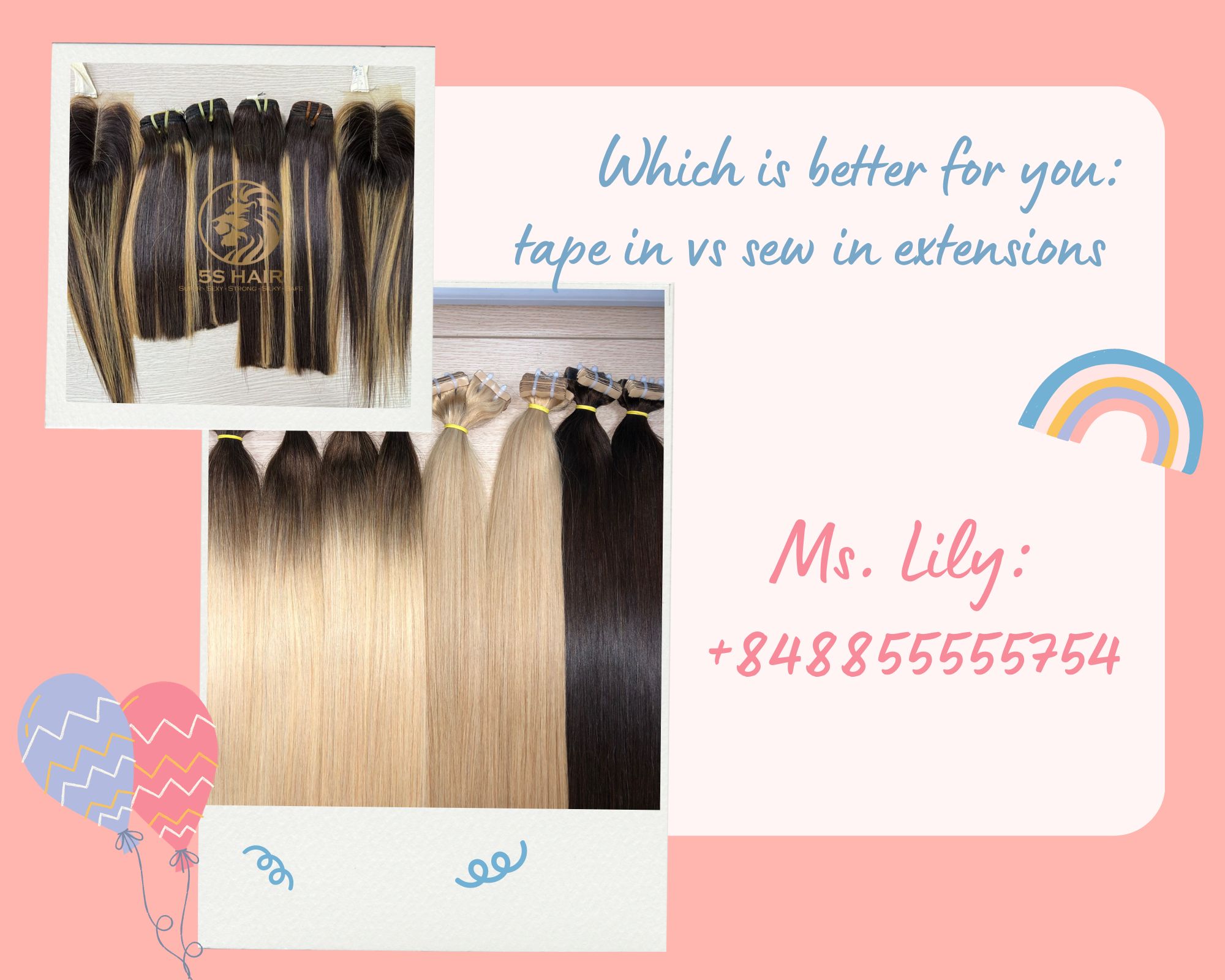
Which is better for you: tape in vs sew in extensions
👉👉👉Click to contact 5S Hair factory now: (+84) 855 555 754 for a special discount👈👈👈
Tape in vs sew in extensions: popular hair extensions
Before learning about the similarities and differences between tape in vs sew in extensions, let’s learn a little basic information about these two types of hair extensions.
- Due to their durability, tape-ins or tape hair extensions are classified as semi-permanent. They can be used for up to six weeks. These wefts are intended to be applied to your own hair and come in narrow strips (about 1.5 inches wide) that may be secured using adhesive tape.
- Extensions that are sewn into your natural hair last the longest. Why? Due to the fact that they are artificial hair and must be sewn into your own. This technique ensures that the extension will stay in your hair for as long as possible.

Tape in vs sew in extensions: popular hair extensions
Both tape in vs sew in extensions are very popular hair extensions on the market. Of course, both tape in vs sew in extensions have their own advantages and disadvantages. In this article, we will show you the similarities and differences between them.
Compare tape in vs sew in extensions
Which tape in vs sew in extensions method is best? One of the most common inquiries we get is about the specifics of tape in vs sew in extensions, so we’ll go through them for you.
The similarities of tape in vs sew in extensions
It’s possible to achieve a full, buoyant look with tape in vs sew in extensions. If you decide to purchase hair extensions, check to see if they are made entirely of human hair. In comparison to synthetic hair, human hair is more durable and realistic looking. Therefore, if you want the most natural hair extensions possible, you should go to reliable suppliers, such as Vietnamese human Hair Extension.
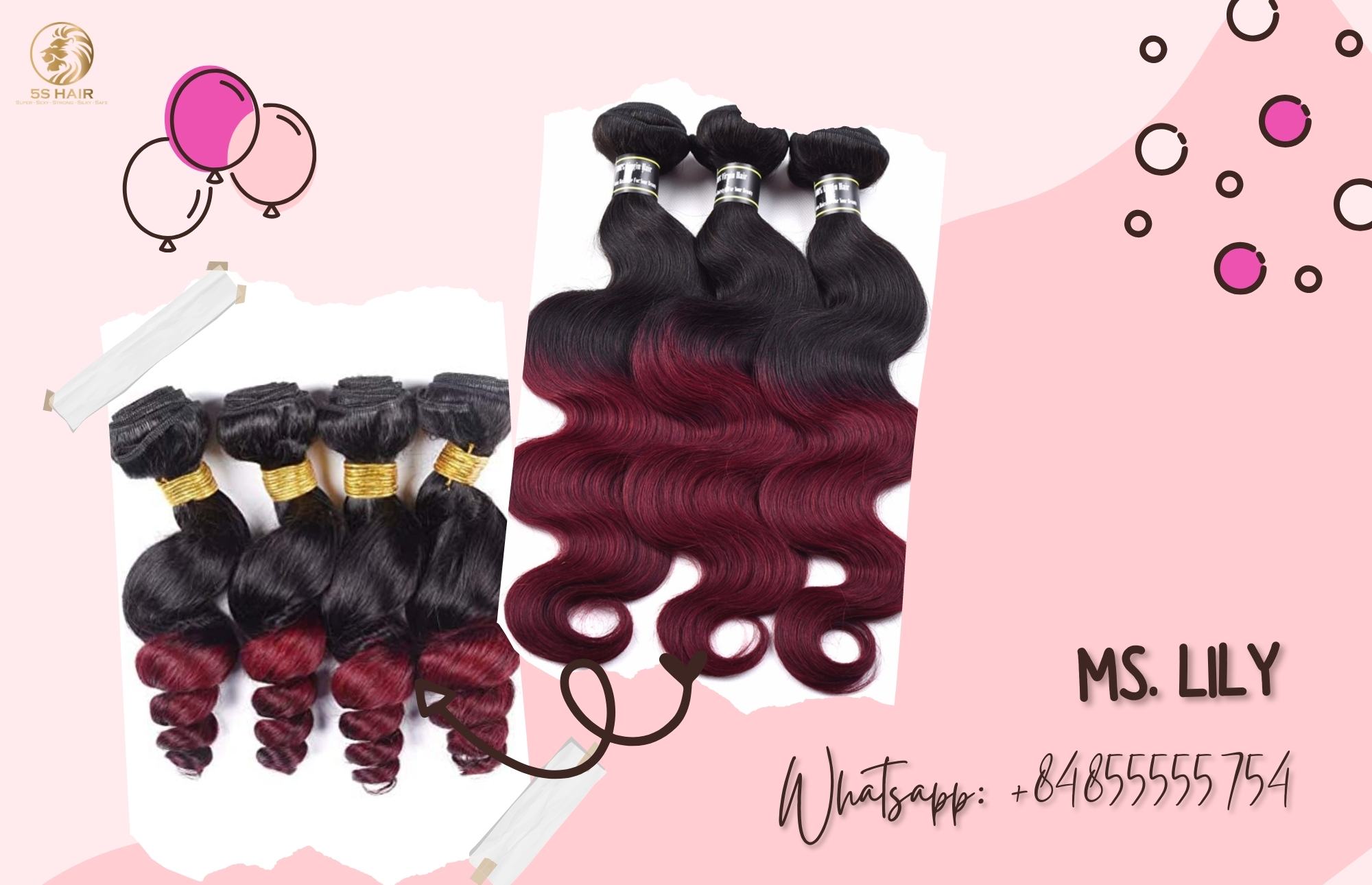
The similarities of tape in vs sew in extensions
👉👉👉Click to contact 5S Hair factory now: (+84) 855 555 754 for a special discount👈👈👈
- The tape in vs sew in extensions allows for a wide range of creative possibilities. You can treat it just like your own hair and style it however you choose. It would appear that a high ponytail is out of the question due to the tape in the hair extension. Certainly a mythical tale. Leaving some room around the hairline while sealing your hair with tape in extensions is the trick to attaining a natural hairline.
- Regular upkeep is necessary for both tape in vs sew in extensions allows to ensure their durability and natural appearance over time. In particular, you shouldn’t brush damp extensions. Wrap your hair in a silk scarf before night for added protection.
- Both tape in vs sew in extensions are safe for your natural hair if applied and maintained properly. Unlike some other types of hair extensions, these two styles do not call for the use of glue or heat to be attached. When it comes to scalps, both are mild and safe.
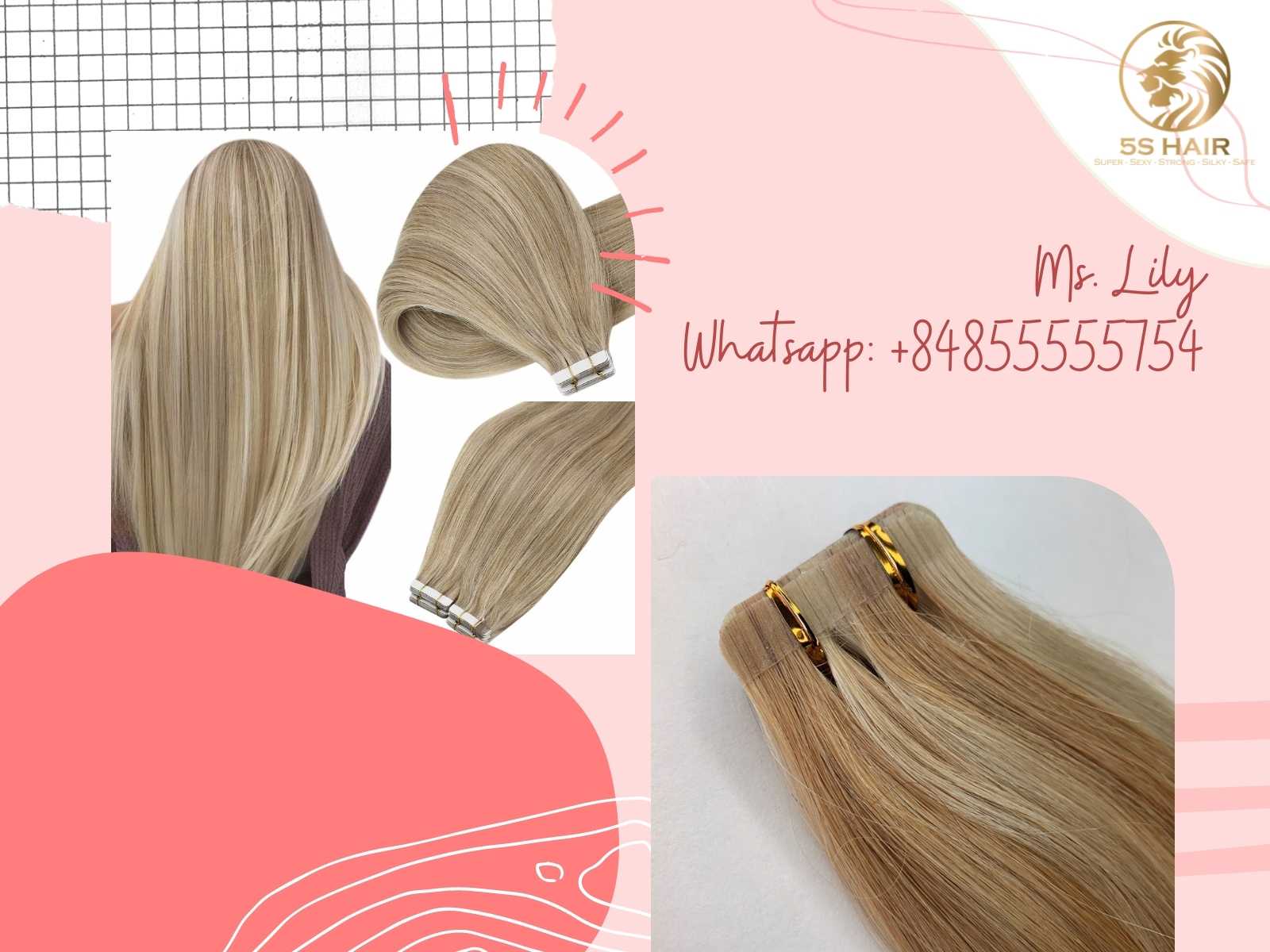
Both tape in vs sew in extensions are safe for your natural hair
👉👉👉Click to contact 5S Hair factory now: (+84) 855 555 754 for a special discount👈👈👈
Tape in vs sew in extensions can be reused multiple times if handled properly. A tape-in extension can usually be employed for three to four different purposes over its lifetime. You can easily replace the tab by peeling off the old tape and sticking on a new one. Regularly treating your hair with specialized hair extension oils will help your extensions last longer and be more versatile
The differences between tape in vs sew in extensions
The two most common types of hair extensions for women today are tape in vs sew in extensions. Though they have certain similarities, there are also key distinctions between the two, including in terms of application, cost, aesthetic, and others.
- By using threads and needles, sew in extensions can be attached to natural braids so that it is more secure and less likely to come loose. Tape hair uses a medical adhesive to secure the extensions to your real hair. Regular moisture exposure may cause the tape to detach, but the sew in extensions will remain permanently in place.
- Between tape in vs sew in extensions, sew-in hair extensions take longer to install. When compared to the 40-60 minutes required to put tape hair extensions, the 3-to-6 hours required to sew in extensions is a significant time difference. That’s also why you’ll pay a premium for a sew in extensions service as opposed to, say, tape stretching.
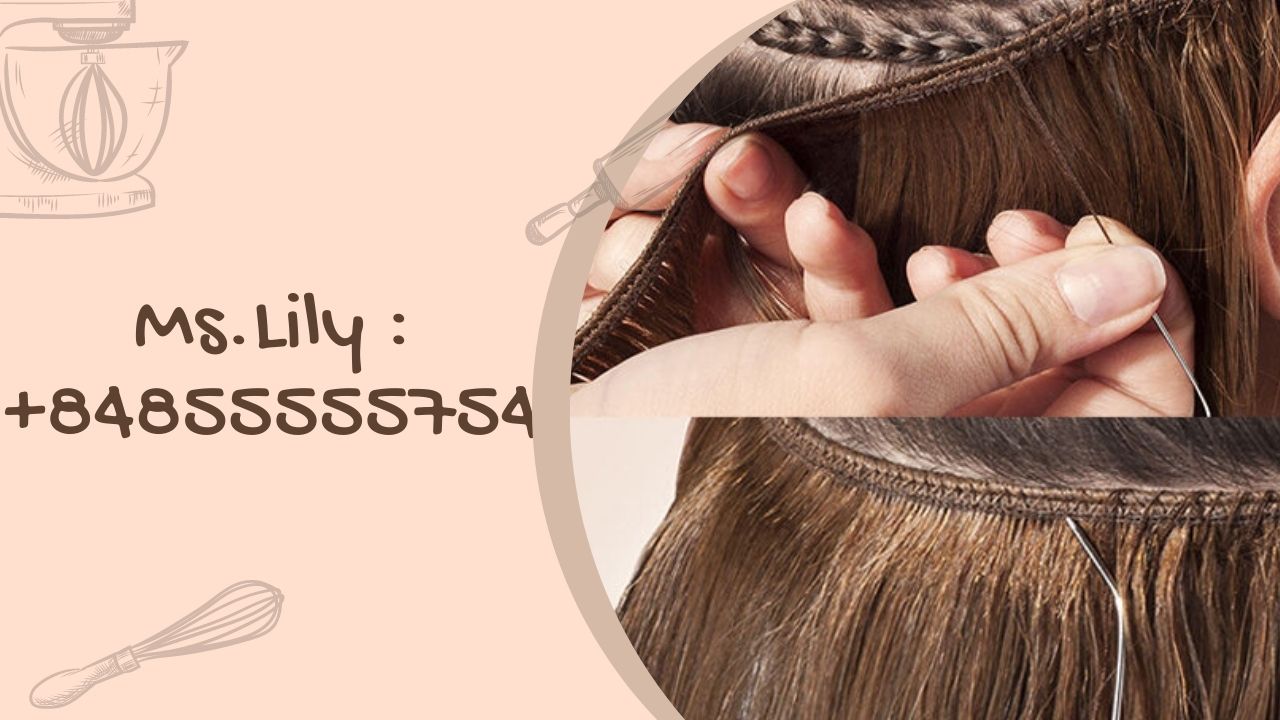
Between tape in vs sew in extensions, sew-in hair extensions take longer to install
👉👉👉Click to contact 5S Hair factory now: (+84) 855 555 754 for a special discount👈👈👈
- When compare tape in vs sew in extensions, sew in extensions lasts longer than tape, although tape should still be removed every 5-6 weeks to give your natural hair a break. Because the additional tension caused by regular tapping can eventually cause hair to fall out. However, with the right aftercare, tape in extensions can remain for up to two months.
- It is important to use a high-quality tape in hair extensions shampoo, as tape extensions attach to your natural hair and can easily fall apart if your hair is oily or if you wash it improperly. Tape-printed hair extensions may require reapplication every 5-6 weeks. Sew-in hair extensions, however, require much less upkeep than tape weaves.
- Both tape in vs sew in extensions can be used to achieve realistic results. While tape extensions allow for a wide range of styling options, the tape bun presents a unique challenge due to the necessity for longer hair to conceal the tape. You can do more with your hair if you use a machine, or you can bead it, or you can tie it in a variety of ways. Both a high bun and a high ponytail work well for this. To sum up, these are great for you if you’re the kind who always has their hands in their hair.

Both tape in vs sew in extensions can be used to achieve realistic results.
👉👉👉Click to contact 5S Hair factory now: (+84) 855 555 754 for a special discount👈👈👈
When applied correctly, both tape in vs sew in extensions are absolutely risk-free. A skilled hairstylist will be able to determine which extension method is best for you and your hair type before beginning the procedure.
What kind is better: tape in vs sew in extensions
You can get healthy, full hair from both tape in vs sew in extensions. How long you want your extensions to last, how much money you have, what kind of lifestyle you lead, etc. all play a role in determining the optimal method.
- Tape in extensions are great for all ladies, but they work especially well for those with fine hair. Thicker, coarser hair usually does better with sew in extensions.
- The best type of extension for women with short hair is one that is sew in extensions. Short hair makes it tricky to cover duct tape extensions, especially if you want to wear your hair in a high ponytail. If you have long hair, though, tying it up in a bun can help you hide more of your face.
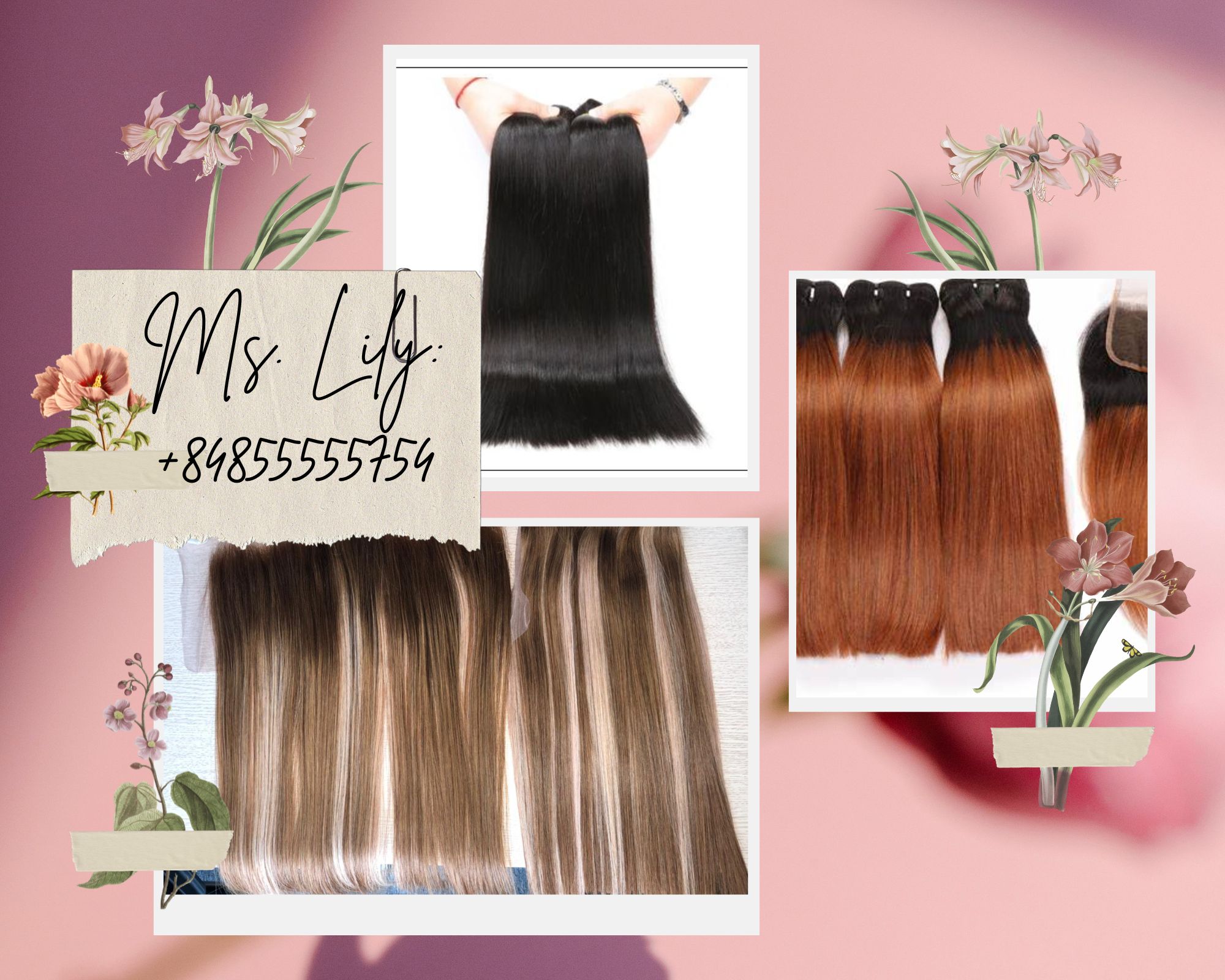
What kind is better: tape in vs sew in extensions
👉👉👉Click to contact 5S Hair factory now: (+84) 855 555 754 for a special discount👈👈👈
- A weave is the best option if you want your extensions to last longer without requiring as many trips to the salon.
Now that you know the ins and outs of each of these tape in vs sew in extensions, you may pick the one that works best for you.
5S Hair Factory – the best hair factory of tape in vs sew in extensions
Tape in vs sew in extensions are not available at all hair extensiosn suppliers. Because 5S Hair Factory has been making and selling premium wigs and extensions for a very long time and because the company owns its own hair facility in Vietnam. Compared to other online hair businesses, 5S Hair Factory consistently offers the lowest costs and highest quality hair extensions.
- Find the ideal tape in vs sew in extensions for you at 5S Hair Factory, no matter what it is. Additionally, the cuticle of each hair in our extensions is maintained because they are created from real human hair.

5S Hair Factory – the best hair factory of tape in vs sew in extensions
👉👉👉Click to contact 5S Hair factory now: (+84) 855 555 754 for a special discount👈👈👈
- Tape in vs sew in extensions may be colored, and styled in any way you like and have a textured, lustrous, long-lasting finish. If taken care of, they have a five-year lifespan and can be used multiple times.
Anytime is a good moment for us to serve you and answer your burning queries. If you’re interested in purchasing human hair extensions, please contact us. We’re confident that you’ll always be satisfied with our offerings.



